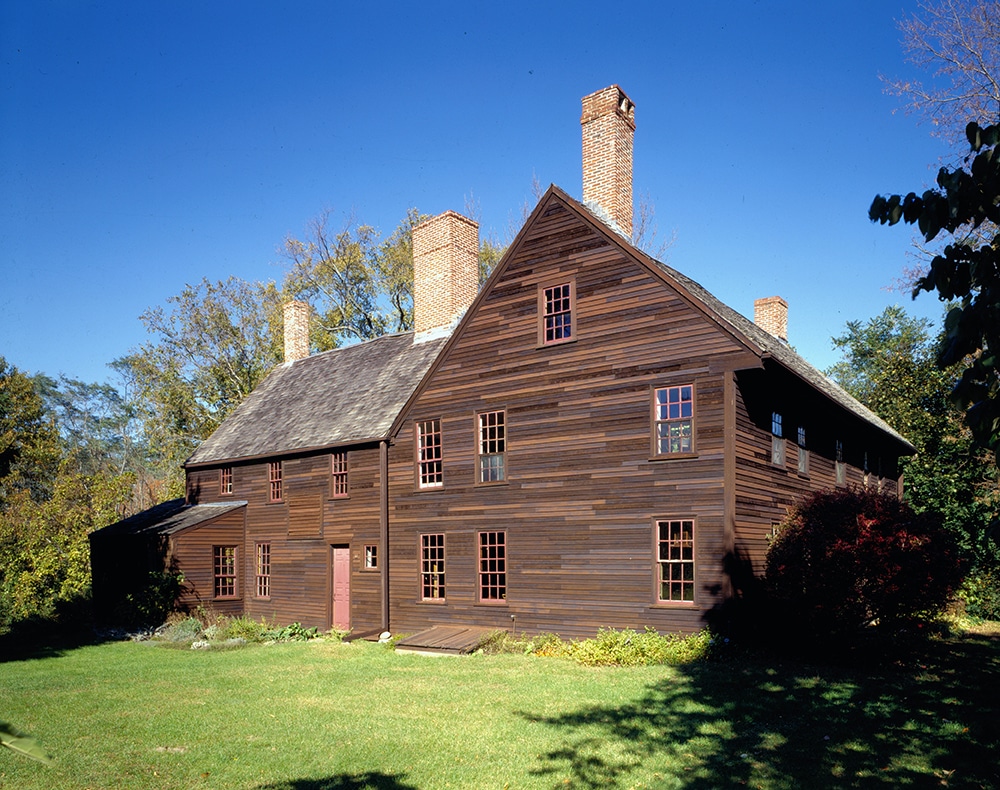Expert Home Advice | October 2016
House care answers from Historic New England, the largest heritage organization in the country.


Why are six-panel doors called Christian or Cross doors?
Joe B., Jaffrey, NH
Throughout the Colonial period, six-panel doors became an increasingly popular design with two smaller panels atop four longer panels, all separated to create what appears to be a cross shape over the form of an open book. It’s an arrangement that has prompted the myth of the “Cross-and-Bible,” “Christian,” or simply, “Cross” door.
One can certainly see where the shape of the upper panels creates a cross with its intersecting rails and crossbar and that a book, the Bible, more specifically, could be represented by the lower panels. But a more likely relationship between the design of wood pieces and the door’s appearance is that of function, efficiency, and aesthetics. Looking at the door from a design and construction perspective makes it easier to understand why this arrangement was popular. A solid wood door would have been extremely heavy and wouldn’t provide as much allowance for shrinking or swelling with seasonal climate changes. In addition, the frame around the panel added structural stability as well as an interesting decorative element.
Joanna McKnight, Preservation Services Manager
***
When might my 20th-century house be considered historic?
Heather M., Williamstown, MA
As with buildings of earlier time periods, those of the 20th century are a testament to the spirit of the times—whether a unique 1930s International-style residence or a functional postwar ranch, buildings give clues about the economic, social, and cultural contexts in which they were built.
From a chronological standpoint, fifty years of age is a common threshold used for designating a building “historic” but it might be historically significant in other ways such as being associated with noteworthy events, people, or an architectural style. Some examples of elements that could be described as “historic” or telling of a chronological period include:
- Windows original to the house— the style, material, and installation;
- Building technologies—framing, assemblage and materials of walls and mechanical and electrical systems;
- Interior and exterior decorative finishes including countertops, flooring, cabinetry, hardware, wallpaper, paint color and finish, and appliances.
Take a 1950s suburban ranch house—chronologically, it is older than fifty years of age, and represents a time in the nation’s history when housing was built quickly and often from stock plans due to demand in the postwar era. This could be considered historic based on chronological, architectural, and social contexts. In considering the architectural significance, one should examine the building elements to understand why they are important. Window frames might be aluminum and composed of larger glass pieces, representing a shift in materials from those used a century earlier. Composite materials used for flooring and countertops signal a shift from natural, hearty materials to those that could be obtained quickly and inexpensively. Each style and chronological period of housing has its own set of “signals” as to its age and history, many of which could be considered historic from multiple perspectives.
Joanna McKnight, Preservation Services Manager
***
What is the purpose of scrolls on chimneys?
Kirsten O., Newport, RI
Scrolls may or may not be early, or original to the chimney, but are in most cases a decorative anchor for a tie rod that was inserted in the chimney to reinforce it at some point. Tie rods are metal rods that are threaded through a chimney or wall structure and bolted together on the outer surface of the masonry with decorative anchors, such as stars or scrolls. Scrolls are often a purely decorative item on early 20th-century chimneys, but could be earlier and functional on an older house. It is the kind of small architectural detail that is easily overlooked and probably hasn’t received a thorough scholarly study.
Sally Zimmerman, Senior Preservation Services Manager
Got a question about an old house you need answered? Submit your questions to Historic New England at: Editor@YankeePub.com.
Historic New England is the oldest, largest, and most comprehensive regional heritage organization in the nation. Historic New England shares the region’s history through vast collections, publications, programs, museum properties, archives, and stories that document more than 400 years of life in New England. For more information visit: HistoricNewEngland.org.


